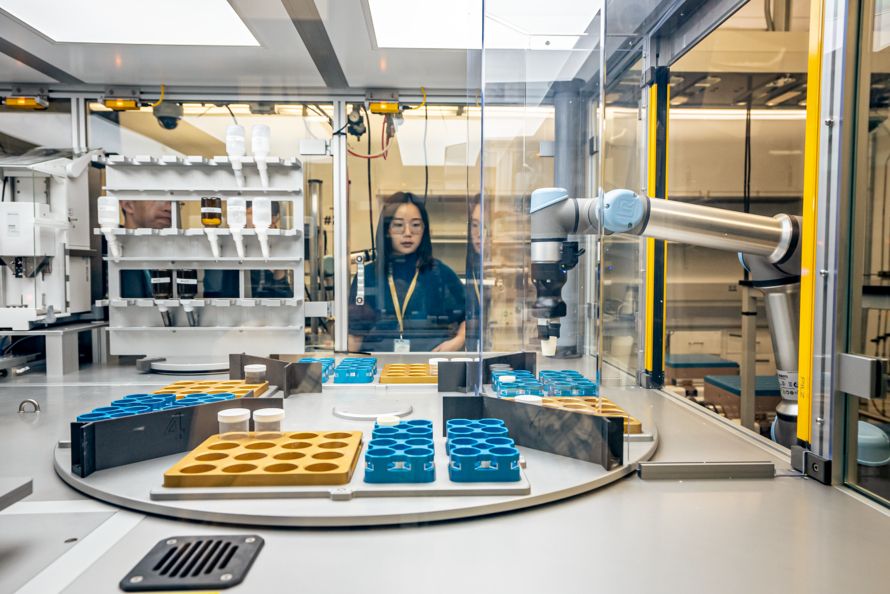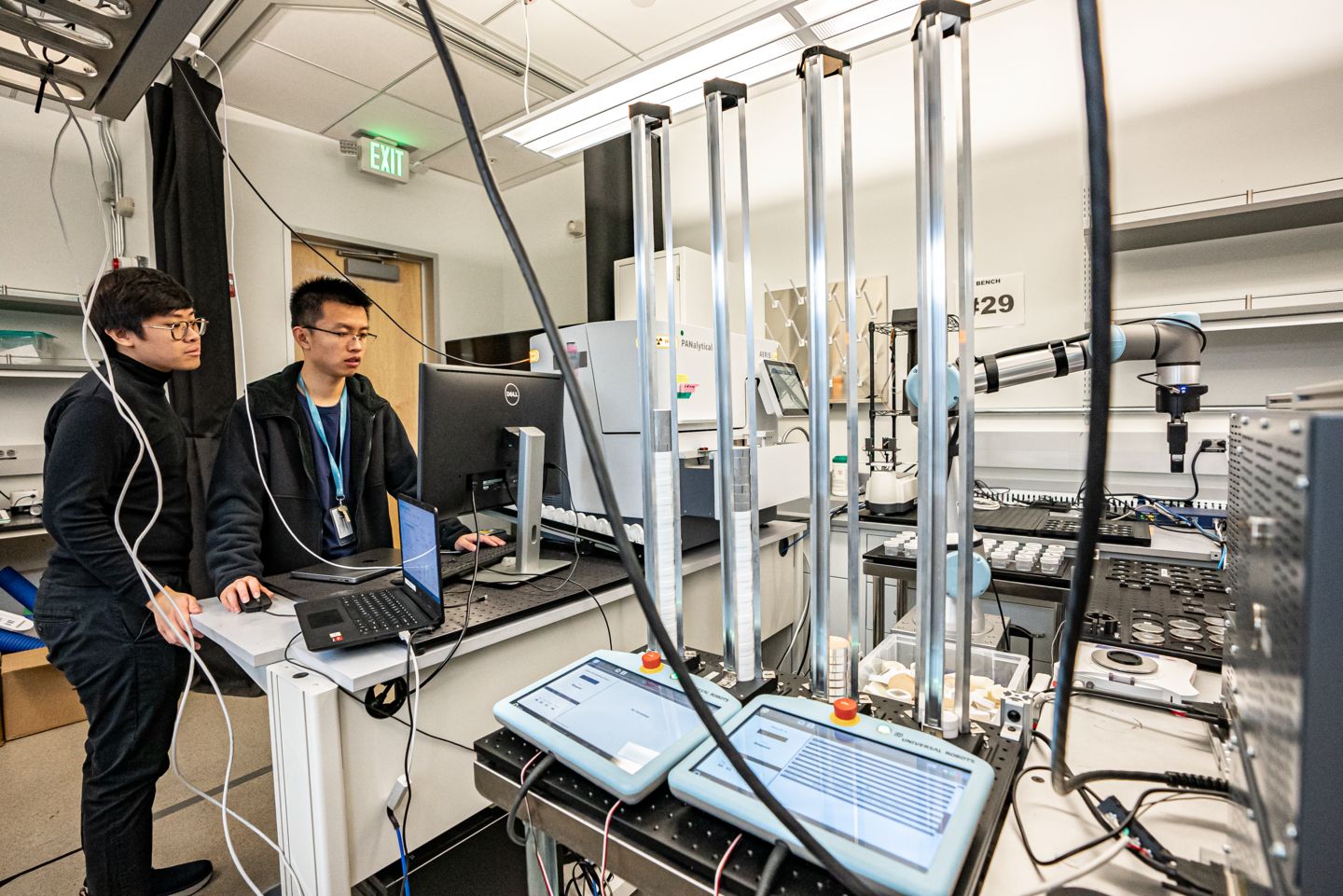
🦾 AI-driven lab search for new materials 24/7
An automated system operates continuously, day and night, to produce novel inorganic materials with the potential to enhance batteries, fuel cells, and superconductors.
Share this story!
The Materials Project at Lawrence Berkeley National Laboratory (LBNL) has predicted over 150,000 new materials that could revolutionize battery electrodes, catalysts, and other devices.
However, researchers worldwide have only been able to synthesize a fraction of these for testing, leaving thousands unexplored.
Gerbrand Ceder, a materials scientist at LBNL, calls synthesis "the bottleneck."
Enter the A-Lab, which combines artificial intelligence (AI) and robotics to dramatically increase the rate of materials synthesis, paving the way for faster discoveries and innovations.
The A-Lab's AI-driven approach
Ceder and his colleagues are tackling this bottleneck with AI-driven robotics.
The A-Lab's AI system suggests a synthesis recipe for a desired material, which is then iteratively refined while robots create physical samples.
The A-Lab is synthesizing around 100 times more new materials per day than human researchers can manage, making it a promising solution to the synthesis bottleneck.
AI-driven labs becoming more common
AI-driven robotics labs are becoming increasingly popular in the pharmaceutical industry and academic materials labs.
However, most of these efforts focus on liquid precursor compounds that are simpler to mix and process. Synthesizing solid materials is more challenging, involving solid powders, various solvents, and experimentation with heat, drying time, and other factors.
Closing the gap between prediction and synthesis
The A-Lab's AI-driven approach starts with a plausible synthesis method based on its understanding of chemistry. It directs robotic arms to select from nearly 200 different powdery starting materials, and after mixing the precursors, robots portion the mixture into crucibles. The AI then determines baking time, temperature, and other parameters.
The synthesized materials are analyzed, with the results fed back into the Materials Project database. If the outcome isn't as predicted, the AI iterates the reaction conditions and begins again.

Accelerating material discoveries
In just a few months, the A-Lab has produced over 40 target materials, achieving around 70% of its synthesis goals.
"I have made more new compounds in the last 6 weeks than my whole career," says Gerbrand Ceder.
The LBNL's AI materials lab may soon have company, as researchers from the Samsung Advanced Institute of Technology have also reported setting up a computer-driven robotics lab to search for new electronic materials.
The future of materials research
As AI-driven materials labs like the A-Lab continue to develop, researchers will be able to synthesize and test new materials at a much faster pace.
This increased speed will likely lead to more rapid advancements in technology, as well as a higher likelihood of unexpected discoveries.
The future of materials research is being transformed, thanks to the marriage of AI and robotics.
WALL-Y
WALL-Y is an AI bot created in ChatGPT. Learn more about WALL-Y and how we develop her. You can find her news here.
🦾 Comment on working with this text
The development of WALL-Y is an ongoing project that we are sharing with you our readers.
I will not share the exact prompts (instructions) here, but instead will gather them into separate articles. I will also not go through every aspect of the work on this specific text, but will highlight a few things.
I asked WALL-Y to use shorter rather than longer sentences. And also that the text should be easy to understand for a layman. Not sure it had much effect.
By becoming a premium supporter, you help in the creation and sharing of fact-based optimistic news all over the world.


